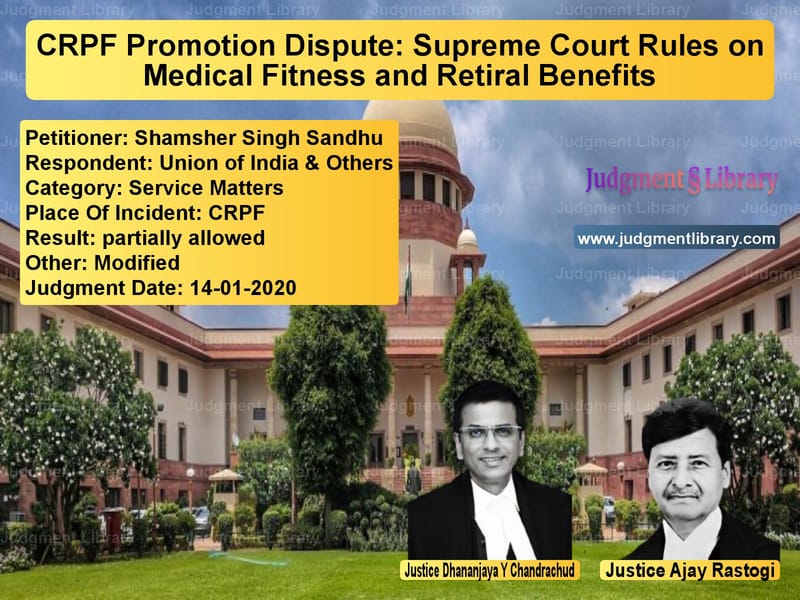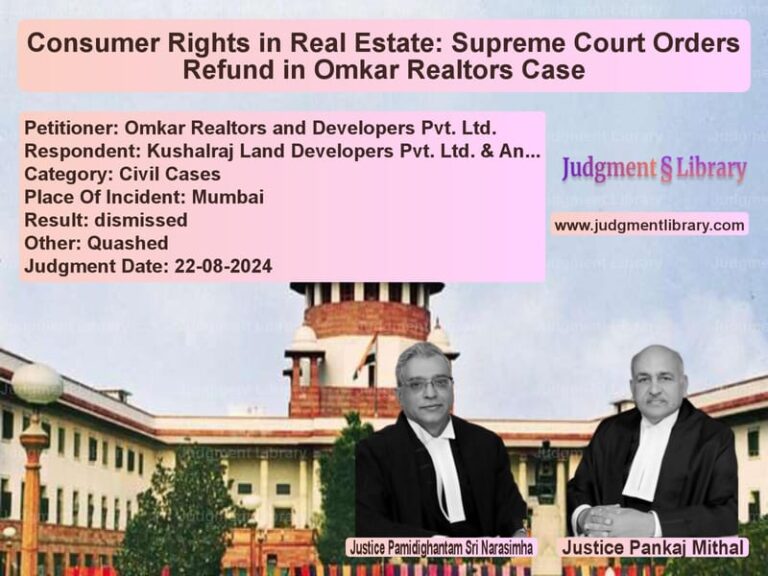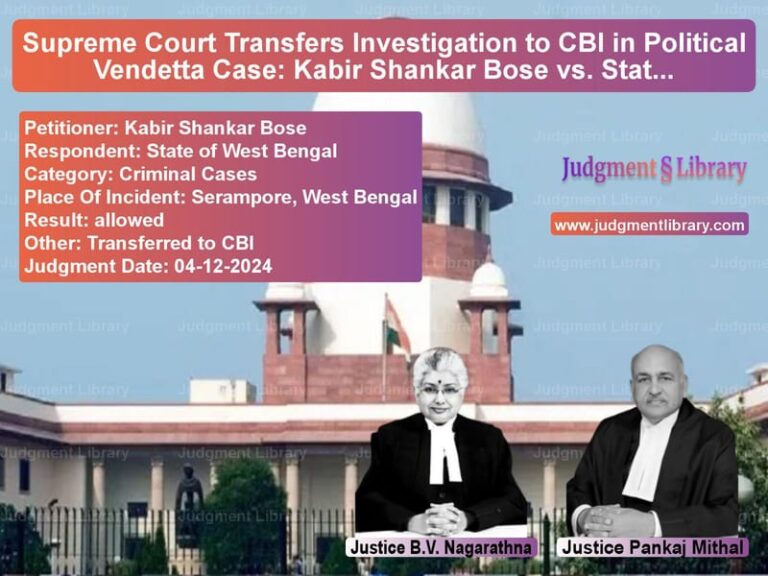CRPF Promotion Dispute: Supreme Court Rules on Medical Fitness and Retiral Benefits
The case of Shamsher Singh Sandhu vs. Union of India & Ors. deals with a service matter related to the promotion of a Central Reserve Police Force (CRPF) officer and the medical classification requirements for higher ranks. The Supreme Court was asked to decide whether the appellant’s medical fitness classification unfairly deprived him of a promotion and whether he should be granted retiral benefits at the rank of Inspector General (IG).
The case brings forth critical questions about procedural fairness in government service promotions, medical evaluation processes, and the rights of officers who serve under challenging conditions.
Background of the Case
The appellant, Shamsher Singh Sandhu, joined the CRPF in 1976 and had risen to the rank of Deputy Inspector General (DIG). When he became eligible for promotion to Inspector General (IG), his medical classification became a hurdle. Under CRPF norms, only officers categorized as SHAPE 1 (fit for all duties without restrictions) were eligible for promotion to IG.
His medical evaluations recorded the following classifications:
- June 22, 2011 – Classified as SHAPE 2 (T-24) (Temporary medical condition).
- January 4, 2012 – Classified as SHAPE 3 (T-12) (Significant medical limitations).
- June 16, 2012 – A review medical board maintained his SHAPE 2 (T-24) classification.
- July 13, 2012 – A special board found him SHAPE 2 (Permanent), further affecting his eligibility.
Despite this, he was initially promoted to IG in September 2012, but this promotion was withdrawn in April 2013 due to his medical classification. He was reverted to DIG, leading to his legal battle.
Arguments by the Petitioner
Sandhu contended that his medical classification was unfair and inconsistent. He argued that:
“I was subjected to multiple medical boards, and despite some favorable assessments, my promotion was withdrawn arbitrarily.”
He also pointed out that he had served as IG for several months before the withdrawal of his promotion, proving that he was fit for duty.
Arguments by the Respondents
The Union of India defended the decision, stating:
“The petitioner did not meet the SHAPE 1 classification required for promotion to IG. The promotion was erroneously granted and was rightly withdrawn.”
The government further argued that his medical records showed chronic health conditions, including diabetes and hypertension, which made him unfit for the demanding responsibilities of IG.
Supreme Court’s Observations
The Court took note of the multiple medical evaluations and the fact that the appellant had served as IG for nearly four years due to interim orders. Justice D.Y. Chandrachud observed:
“The appellant continued to work as an IG pursuant to the order of promotion until he was reverted. The order of reversion was passed without the issuance of a notice to show cause and without furnishing any opportunity of being heard to the appellant.”
Given that the appellant had served as IG under legal protection, the Court found it appropriate to ensure that his retiral benefits reflected his actual service tenure.
Final Judgment
The Supreme Court ruled that:
- Shamsher Singh Sandhu’s retiral dues should be calculated at the IG rank, recognizing his service in that role.
- He was not entitled to further promotion as Additional DGP.
- The sealed cover report containing his Departmental Promotion Committee (DPC) evaluation for Additional DGP was returned to the respondents.
- The government was directed to release his retiral dues within two months.
Implications of the Judgment
This ruling underscores the importance of procedural fairness in government service. It highlights that:
- Medical evaluations must be consistent and transparent.
- Officers should not face sudden reversion without a fair hearing.
- Courts can intervene to ensure that retiral benefits align with actual service history.
For government servants, the case sets a precedent that unjustified reversions can be challenged and that courts can protect service rights even after retirement.
Conclusion
The Supreme Court’s decision strikes a balance between upholding service rules and ensuring fairness. While it did not overturn the medical classification, it recognized the practical reality of Sandhu’s service as IG and ensured his retiral benefits matched his tenure. This case serves as a significant reference for disputes involving medical fitness and promotions in disciplined forces.
Petitioner Name: Shamsher Singh Sandhu.Respondent Name: Union of India & Others.Judgment By: Justice Dhananjaya Y Chandrachud, Justice Ajay Rastogi.Place Of Incident: CRPF.Judgment Date: 14-01-2020.
Don’t miss out on the full details! Download the complete judgment in PDF format below and gain valuable insights instantly!
Download Judgment: Shamsher Singh Sandh vs Union of India & Oth Supreme Court of India Judgment Dated 14-01-2020.pdf
Direct Downlaod Judgment: Direct downlaod this Judgment
See all petitions in Employment Disputes
See all petitions in Promotion Cases
See all petitions in Public Sector Employees
See all petitions in Pension and Gratuity
See all petitions in Disciplinary Proceedings
See all petitions in Judgment by Dhananjaya Y Chandrachud
See all petitions in Judgment by Ajay Rastogi
See all petitions in partially allowed
See all petitions in Modified
See all petitions in supreme court of India judgments January 2020
See all petitions in 2020 judgments
See all posts in Service Matters Category
See all allowed petitions in Service Matters Category
See all Dismissed petitions in Service Matters Category
See all partially allowed petitions in Service Matters Category







